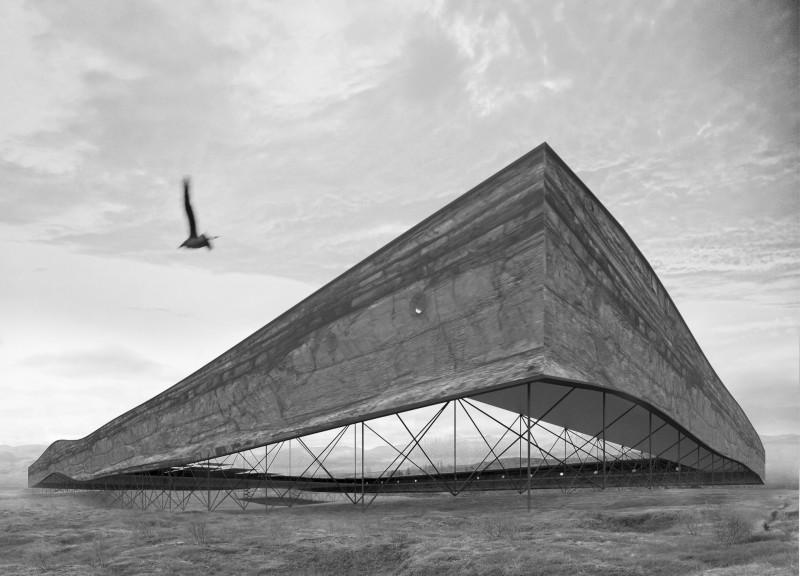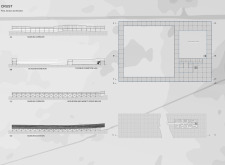5 key facts about this project
CRUST is a volcanic museum located in Iceland that engages visitors with the intricate relationship between geological evolution and architectural design. Situated in a landscape shaped by significant volcanic activity, the museum serves an educational purpose, offering insights into Earth’s formation and biological history over billions of years. The overall design concept merges functionality with environmental sensitivity, creating a space that enhances understanding of the natural processes that shape the planet.
Design Concept
The concept of CRUST focuses on illustrating the dynamic geological history of Earth, particularly in Iceland's unique volcanic terrain. The museum is elevated off the ground, allowing visitors to appreciate broad views of the surrounding landscape while minimizing environmental impact. This elevation fosters a direct connection between the interior spaces and the geological features that inform the museum's narrative.
Architectural Layout
The layout uses a modular grid system to create a flexible exhibition space that promotes visitor engagement and accommodates various educational programs. Outdoor exhibition areas encourage interaction with the natural environment, offering a comprehensive experience. Each section of the museum is prefabricated and transported to the site, enhancing construction efficiency and reducing disturbance to the local ecology.
Material Selection
The structure features aluminum framed roof panels and aluminum framed slab panels, each measuring 5m x 5m. These panels are assembled on site to form cohesive roofing and flooring systems. The steel framework includes brace frames to ensure stability against seismic activity, which is critical in a region with ongoing geological changes. The foundation consists of concrete footings designed to provide strong support for the elevated design.
Geological Integration
The museum’s facade prominently displays core samples from the surrounding area, linking its appearance to the geological story it wants to tell. This choice of materials not only reinforces the educational goals of the structure but also ensures durability in Iceland's varied climate. The relationship between natural materials and architectural form highlights the essence of the Earth’s history, grounding the museum within its geological context.
The integration of core samples into the facade serves as a clear representation of geological history, making the museum a part of the story it communicates.






















































